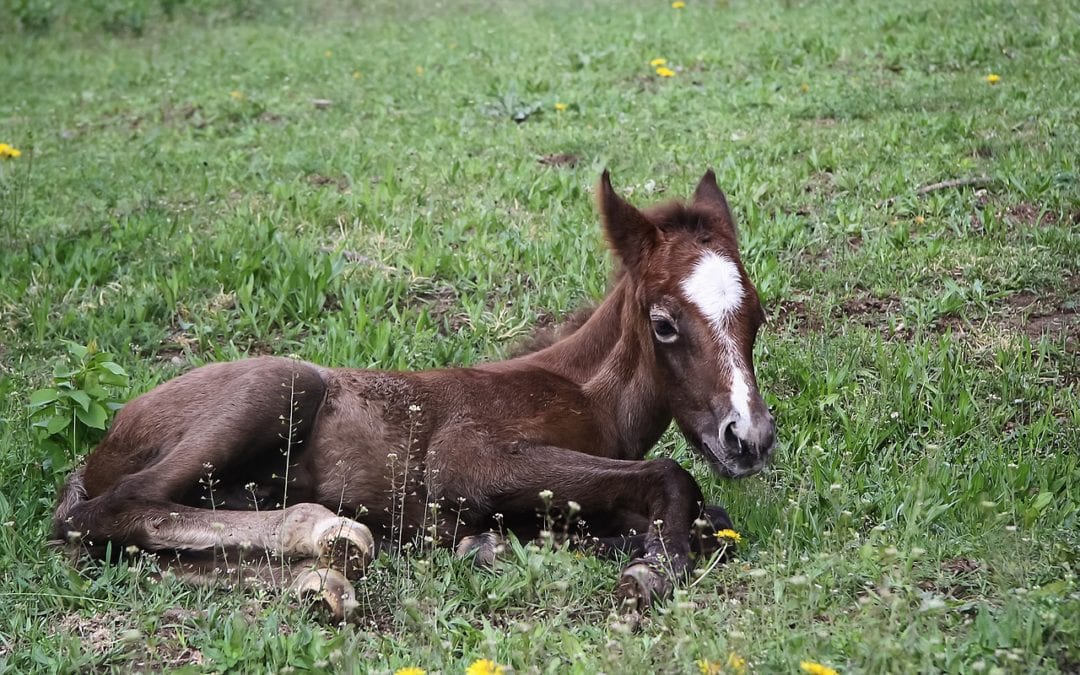A Foal is Born
…but Mom is Having Difficulties!, by Chuck Maker, DVM
 Six days ago a little “Whiskey N Diamonds colt” was born. It was 6 o’clock in the morning on a Monday when we got an emergency call that one of the mares under our care had had her foal sometime over the weekend. She was not acting right and showing signs of fever and mild colic
Six days ago a little “Whiskey N Diamonds colt” was born. It was 6 o’clock in the morning on a Monday when we got an emergency call that one of the mares under our care had had her foal sometime over the weekend. She was not acting right and showing signs of fever and mild colic
We had been keeping a close eye on this particular “Chrome” mare for the last 2 weeks anticipating her big day the middle of May but we surmise she had other ideas. She had not shown evidence of impending foaling and was still without udder development or waxing and hadn’t foaled earlier with her last filly. As patterns from one foal to next are often similar the owner had not yet begun checking her for milk calcium levels as we often recommend to help further predict when a mare will foal. Fortunately in this situation Mother Nature was able to prevail and the foal greeted the owner dry and nursing at 6 AM last weekend. The mare however had some issues that without prompt attention could be serious. While her placenta had appeared to have passed our further inspection revealed that it had not passed completely. One of the “socks” of ends of the placenta was missing a “toe” The placenta is the vital tissue that connects mother and fetus and provides the baby with nutrients throughout pregnancy. Signs of retained placenta or the ensuing endometritis or uterine infection are very serious if not tended to rapidly, particularly in horses. Retained fetal membranes can lead to serious infection within 24 hours and can allow for the development of systemic inflammation and fever with a very high risk of founder or laminitis.
Fortunately with rapid medical treatment including lavaging the uterus with sterile saline and antibiotics and supportive medical care this mare will get to see her foal grow up and go on the have many more foals if the owner wishes. A placenta in one piece looks like:


